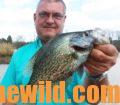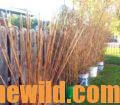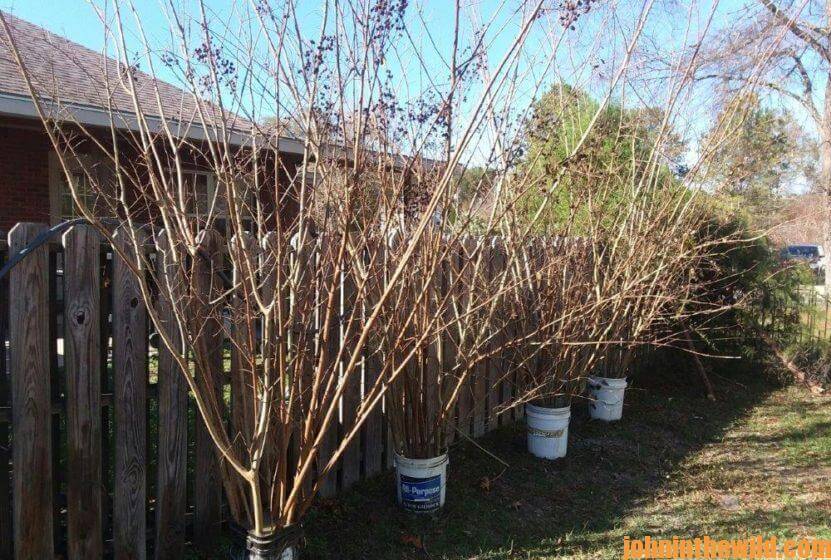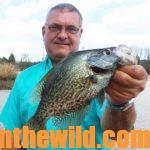Editor’s Note: “The fastest I’ve ever finished a two-angler limit of 60 crappie was 45 minutes,” Tony Adams, a crappie farmer on Alabama’s Lake Eufaula on the Chattahoochee River, explains. “Catching 60 crappie in 1-1/2 hours isn’t uncommon, and most of the time from April to October, my two fishermen will catch their 60-crappie limit – 30 each – in 3-1/2 hours or less.” As the great baseball player Dizzy Dean once said, “If you’ve done it, it ain’t bragging,” and I’ve seen Adams do it. In the movie, “Field of Dreams,” the voice in Kevin Costner’s head told him, “Build it and they will come,” so, he built a baseball field in the middle of an Iowa corn field that people paid to come and see. Tony Adams builds crappie condos throughout Lake Eufaula to provide places to fish and catch crappie. He also pre-scouts his underwater structures before trips to identify locations with the most crappie on them. We asked Adams how, where and with what he builds these underwater structures for crappie fishing and why he puts them out. You can use these same tactics to make your crappie lake a reliable place for you to find and catch crappie throughout the year.
 As I experimented with different types of natural cover for crappie, I first used riverbank cane, or cane that was growing in people’s yards and had become a nuisance. They were glad to have someone cut their cane every year to keep it from taking over their yards. At the same time that I decided to test using cane in 5-gallon buckets of concrete for crappie habitat, I also noticed the abundance of crepe-myrtle limbs. Crepe myrtle needed to be trimmed every year. Most people with crepe-myrtle bushes in their yard just piled up their limbs, 6-12 foot long, after cutting them. I’d go over to my mother’s house, trim her crepe myrtles back every summer and found that those limbs would fit perfectly in a 5-gallon bucket. I volunteered to haul off her neighbors crepe-myrtle limbs for them. Then took them to my house and stood them up in 5-gallon buckets, filled with concrete. I’d learned that crappie like a vertical structure they could move up and down on, in or beside, according to the time of year, the water temperature, the water clarity and the moon phase. So, although crappie might be 6 or 8 feet off the bottom, they still would hold in that structure. A 5-gallon bucket filled with 60 pounds of concrete wouldn’t move.
As I experimented with different types of natural cover for crappie, I first used riverbank cane, or cane that was growing in people’s yards and had become a nuisance. They were glad to have someone cut their cane every year to keep it from taking over their yards. At the same time that I decided to test using cane in 5-gallon buckets of concrete for crappie habitat, I also noticed the abundance of crepe-myrtle limbs. Crepe myrtle needed to be trimmed every year. Most people with crepe-myrtle bushes in their yard just piled up their limbs, 6-12 foot long, after cutting them. I’d go over to my mother’s house, trim her crepe myrtles back every summer and found that those limbs would fit perfectly in a 5-gallon bucket. I volunteered to haul off her neighbors crepe-myrtle limbs for them. Then took them to my house and stood them up in 5-gallon buckets, filled with concrete. I’d learned that crappie like a vertical structure they could move up and down on, in or beside, according to the time of year, the water temperature, the water clarity and the moon phase. So, although crappie might be 6 or 8 feet off the bottom, they still would hold in that structure. A 5-gallon bucket filled with 60 pounds of concrete wouldn’t move.
Besides placing crappie habitat in or close to ditches then and now, I like to put out crappie attractors on humps (underwater mounds that come up from the bottom). For instance, I may be over a 30-foot bottom with a small ridge or a hump that comes up 5-10 feet off that 30-foot bottom. I like to put structure on humps because crappie prefer to stay in shade. When the sun comes up, the crappie usually will be in the structure, on the shady side of the structure or on the shady side of a hump. If they’re holding on the shady side of the hump, they can move up and feed on the minnows and the shad concentrating on the structure. Then they can return to the shady side of the hump until they decide to feed again.
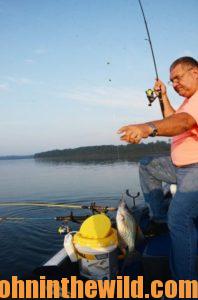 If I find a hump in a creek with not much current, I don’t have to worry about my bucket being toppled over by the current. If I’m putting structure on main river humps, I want to sink my buckets on the upcurrent side of the hump. That way, if the current is strong enough to tip my bucket over, then the crepe myrtle, the cane or the tree still will be on the hump and instead of standing up, will be laying down. Also, when the bottom of my bucket faces into the current and the structure of cane, trees or crepe myrtles is in the slack water behind the bucket, the crappie still will hold and feed in that slack water behind the bucket where my structure’s still up off the bottom. But 60 pounds of concrete in a 5-gallon bucket holding up crepe myrtle limbs or cane must encounter a terribly-strong current to knock that bucket over.
If I find a hump in a creek with not much current, I don’t have to worry about my bucket being toppled over by the current. If I’m putting structure on main river humps, I want to sink my buckets on the upcurrent side of the hump. That way, if the current is strong enough to tip my bucket over, then the crepe myrtle, the cane or the tree still will be on the hump and instead of standing up, will be laying down. Also, when the bottom of my bucket faces into the current and the structure of cane, trees or crepe myrtles is in the slack water behind the bucket, the crappie still will hold and feed in that slack water behind the bucket where my structure’s still up off the bottom. But 60 pounds of concrete in a 5-gallon bucket holding up crepe myrtle limbs or cane must encounter a terribly-strong current to knock that bucket over.
I’m often asked, “If you have crepe-myrtle limbs or cane that’s 6-10 feet long, how deep does the water need to be where you’ll sink that structure?” I want to sink my crappie structure in half the depth of the bottom. In other words, if I’m over a 30-foot bottom, I’ll sink my structure, so it will stand-up 20 feet off the bottom. If I’m in 20 feet of water, I’ll sink my structure to stand-up 10 feet off the bottom. The rule of thumb I use is that I’ll always want the top of my structure to be halfway up from the bottom. If the crappie are concentrating in 8-10 feet of water, and I can tell by looking at my depth finder how deep the crappie tend to be holding, then I want the bottom of my bucket in 20 feet of water. If I’m putting my buckets in a ditch on a flat, and the bottom of that ditch is 14 feet deep, I’ll cut the branches of my crepe myrtles or cane so that the top of the structure is at 7 feet.
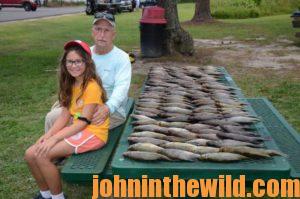 Using this formula, we’ve found we can drop our minnows or jigs on the side of the structure and down in the structure or hold our lures and baits just above the structure and not get hung. I like to place crepe-myrtle limbs and bamboo cane in the buckets I sink because those materials tend to be straight, slick-sided structure that prevents your hook from always getting stuck in the cover.
Using this formula, we’ve found we can drop our minnows or jigs on the side of the structure and down in the structure or hold our lures and baits just above the structure and not get hung. I like to place crepe-myrtle limbs and bamboo cane in the buckets I sink because those materials tend to be straight, slick-sided structure that prevents your hook from always getting stuck in the cover.
To get in touch with Adams, call him at (334) 695-3003, or go to his Facebook page, “Gone Fishing with Tony Adams” at https://www.facebook.com/Gone-Fishing-With-Tony-133709770592006/ and see where he posts pictures every day that he takes anglers out fishing.
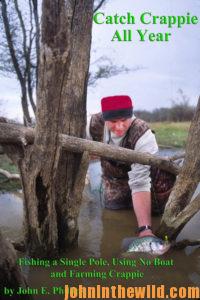 To learn more about crappie fishing, check out John E. Phillips’ book, “Catch Crappie All Year: Fishing a Single Pole, Using No Boat and Farming Crappie” in print and Kindle versions at http://amzn.to/1DBpnNh and Click here for the Audible link. You may have to cut and paste this link into your browser. (When you click on this book, notice on the left where Amazon says you can read 10% of this book for free and hear 10% for free).
To learn more about crappie fishing, check out John E. Phillips’ book, “Catch Crappie All Year: Fishing a Single Pole, Using No Boat and Farming Crappie” in print and Kindle versions at http://amzn.to/1DBpnNh and Click here for the Audible link. You may have to cut and paste this link into your browser. (When you click on this book, notice on the left where Amazon says you can read 10% of this book for free and hear 10% for free).
Tomorrow: Bamboo Builds Good Crappie Habitat with Fishing Guide Tony Adams

